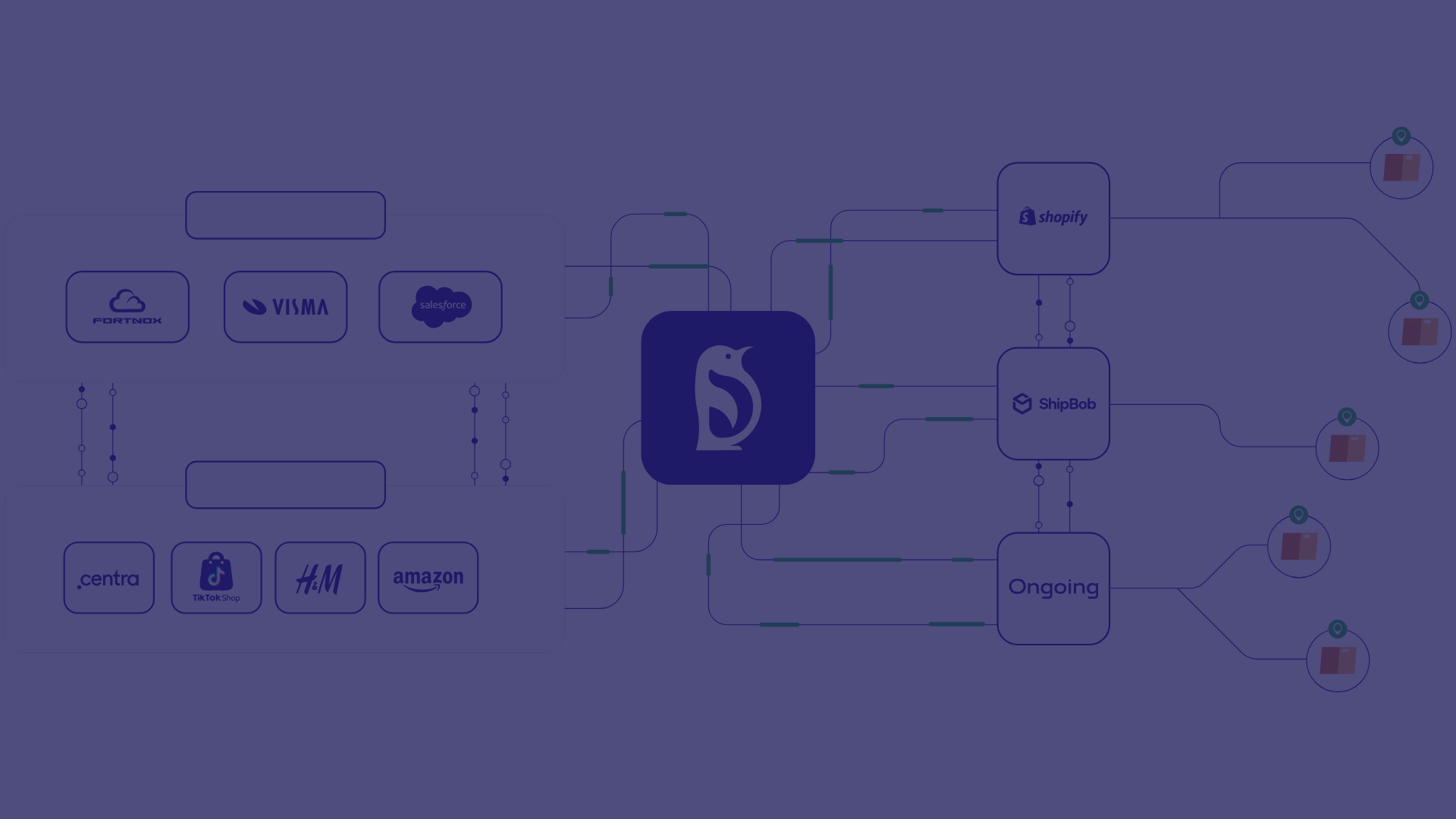Top 5 reasons why seamless integrations are critical for eCommerce growth
In today’s eCommerce landscape, businesses rely on multiple platforms – ERPs, WMS, marketplaces, and fulfillment providers – to manage operations efficiently. However, these systems don’t always communicate seamlessly, leading to operational bottlenecks and inefficiencies.
Read more about eCommerce integrations here!
Disjointed systems create challenges like order delays, stock discrepancies, and inefficiencies that impact profitability and customer satisfaction. Without seamless integrations, businesses may struggle to scale effectively.
In this article, we’ll explore the top five reasons why strong integrations are critical for sustainable eCommerce growth.

1. Operational flow & accuracy
Managing multiple disconnected systems often means switching between different platforms, leading to order mismatches, incorrect stock levels, and fulfillment errors. Integrating key eCommerce platforms ensures real-time data consistency, reducing the risk of human error and saving valuable time.
A direct connection between your eCommerce store and warehouse management system (WMS) helps maintain accurate stock levels, preventing overselling or stockouts. Similarly, integrating order management systems (OMS) with shipping providers ensures faster and more reliable deliveries. Investing in a well-integrated ERP system can provide long-term benefits by creating a more efficient and scalable business model.
2. Market expansion & omnichannel success
As eCommerce businesses grow, expanding into new marketplaces and sales channels becomes essential. However, without proper integrations, managing orders across multiple platforms can quickly become overwhelming.
Prime Penguin’s partner ChannelEngine helps businesses connect with leading marketplaces, making marketplace expansion more manageable. In a recent article, they highlight key strategies for driving profitable marketplace growth, emphasizing the importance of balancing competitiveness with margin protection.
While ChannelEngine streamlines marketplace connections, Prime Penguin ensures that backend integrations—from warehouse and inventory management to order fulfillment—work seamlessly together. This allows businesses to scale efficiently, centralizing order management and inventory tracking across multiple channels without manual updates and delays.

3. Returns & reverse logistics
Returns are an unavoidable part of eCommerce, costing retailers an estimated 17% of total sales. Yet, many businesses still approach returns reactively, leading to logistical inefficiencies, higher costs, and sustainability concerns.
A more strategic approach can make returns easier to manage and less of a financial strain. The key lies in three areas:
- Prevention – Clear product descriptions, accurate sizing guides, and better customer education help reduce unnecessary returns.
- Optimization – Well-structured return policies and efficient processing prevent delays and inventory disruptions.
- Automation – Technology-driven solutions improve reverse logistics, making returns faster, more transparent, and less costly.
Many retailers are now setting up regional return hubs – such as one on each U.S. coast – to consolidate returns and reduce costs. Others are leveraging return-specific fulfillment centers to streamline operations and minimize environmental impact.
Companies like Returbo specialize in optimizing returns management, helping businesses reduce handling costs and improve efficiency.

4. Compliance & supplier coordination
For international eCommerce businesses, staying compliant with VAT regulations, local tax laws, and trade restrictions is essential. Integrating ERP systems and tax compliance tools simplifies this process, reducing administrative burdens and ensuring businesses meet legal requirements.
Learn more about VAT compliance for eCommerce here.
Seamless integrations also improve supplier coordination by automating purchase orders, enabling real-time tracking, and streamlining communication with manufacturers. This minimizes supply chain disruptions, enhances efficiency, and helps businesses scale operations more effectively.

5. Customer expectations & delivery speed
Modern eCommerce customers expect fast shipping, real-time tracking, and a smooth order experience. Without robust integrations, businesses struggle to meet these demands, leading to cart abandonment, negative reviews, and lost revenue.
By connecting fulfillment centers, carriers, and sales platforms, businesses can ensure:
✅ Faster order processing with automated workflows
✅ Accurate tracking updates for customers
✅ Seamless last-mile delivery coordination
A well-integrated system not only enhances operational efficiency but also builds customer trust and loyalty, which in turn drives long-term growth.
Conclusion
A well-integrated eCommerce tech stack is about efficiency, enabling growth, scalability, and a superior customer experience. Companies that invest in seamless integrations can streamline operations, expand into new markets, and optimize logistics without unnecessary manual effort.
Want to see how seamless integrations can transform your eCommerce operations?
Book a free demo
We are already excited to show you the future of logistics!
